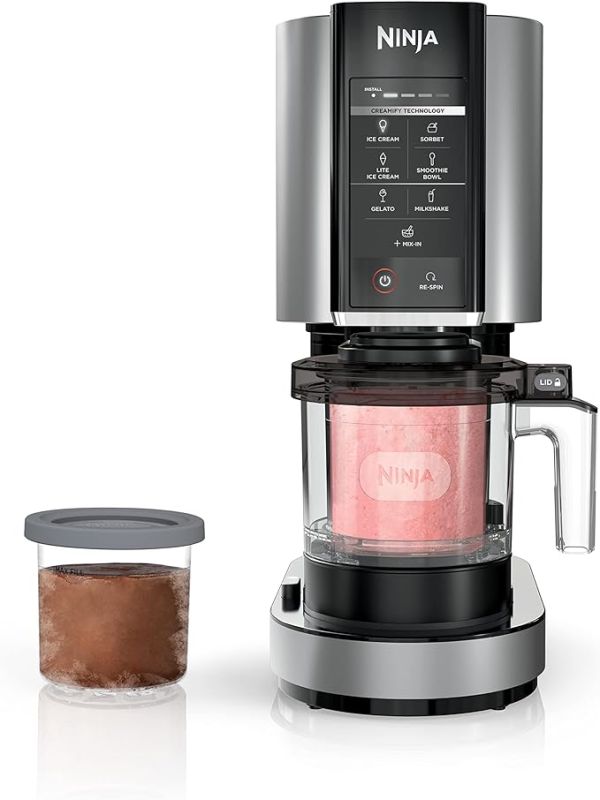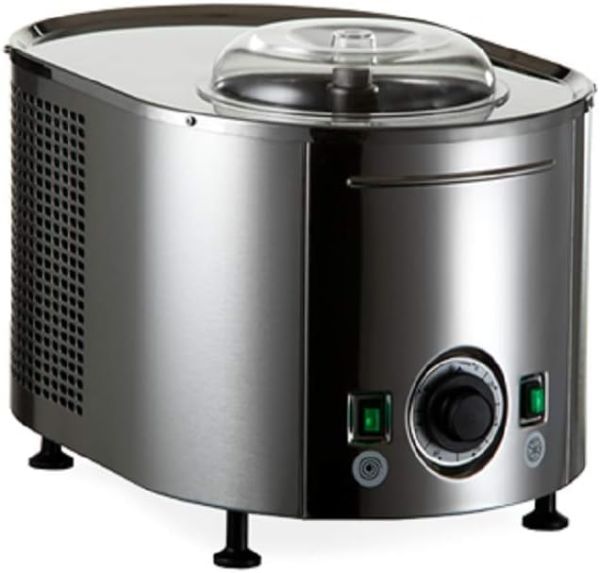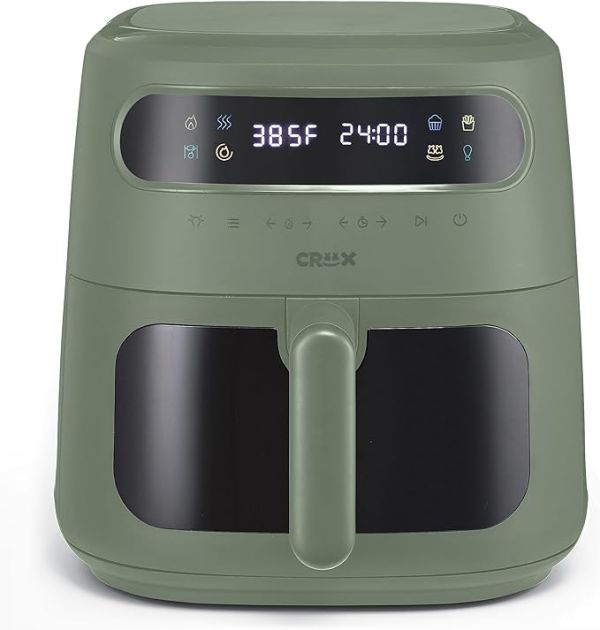Choosing Between High-Speed and Standard Blenders for Your Kitchen Needs
-
- Understanding the Power: Differences Between High-Speed and Standard Blenders
- Key Benefits of High-Speed Blenders for Smoothies and Soups
- What You Can Achieve with a Standard Blender: Limitations Explained
- Comparing Noise Levels: Is a High-Speed Blender Worth the Sound?
- Cost Analysis: Are Higher Watts Justified in Your Kitchen?
- Choosing the Right Blender for Your Cooking Habits and Lifestyle
- Q&A:
- What is the main difference between high-speed and standard blenders?
- Are high-speed blenders worth the extra cost?
- Can I make hot soups in a high-speed blender?
- How do high-speed blenders handle tougher ingredients like ice or frozen fruits?
- What type of recipes benefit most from using a high-speed blender?
- What are the main differences between high-speed and standard blenders?
- Reviews

If you're preparing smoothies, soups, or nut butters, opting for a model with higher power output can accelerate your blending process significantly. For creations requiring smooth textures, look for appliances that offer at least 1000 watts. This will reduce the blending time and enhance the consistency of your mixtures.
Models under 600 watts may struggle with tougher ingredients like ice or fibrous vegetables, leading to uneven results. A blender with a powerful motor will not only save time but also achieve smoother blends, ideal for those who prioritize quality.
Additionally, consider the speed settings. Blenders with multiple speeds provide flexibility, allowing you to control the texture of your recipes precisely. Whether you’re blending soft fruits or crushing ice, having this versatility can make all the difference.
When budget constraints are a factor, evaluate the necessary features. While more power often equates to better performance, there are budget-friendly options that still deliver satisfactory results for basic tasks. Balance your choice between power and cost based on your culinary needs.
In conclusion, for serious kitchen tasks, investing in a higher wattage model can transform your cooking experience, providing you with the tools needed to create a variety of delicious and nutritious mixtures.
Understanding the Power: Differences Between High-Speed and Standard Blenders
Choosing the right kitchen device requires understanding wattage implications on performance. High-powered units typically offer superior blending efficiency for tougher ingredients.
Key distinctions include:
- Motor Power: Devices with higher wattage can blend harder items like frozen fruits or ice more effectively, producing smoother textures.
- Speed Settings: Advanced models often feature multiple settings, allowing for precise control over blending consistency based on need.
- Blade Design: Cutting-edge designs provide enhanced cutting and mixing capabilities, ensuring a more thorough blend.
Consider your culinary needs:
- If creating smoothies or soups regularly, opt for models exceeding 1000 watts for optimal results.
- Occasional blending tasks may suffice with lower wattage units, ranging from 300-600 watts.
Evaluate longevity as well:
- Higher wattage appliances tend to last longer under heavy use due to robust construction and engineering.
- Standard units may wear out faster if pushed beyond their limits, leading to potential early replacements.
Assess budget implications too:
- Powerful devices generally carry a higher cost, reflecting their enhanced capabilities.
- Moderately priced options remain suitable for lighter usage without compromising basic functionality.
Your choice impacts culinary outcomes significantly. Prioritize your specific blending demands to select the ideal apparatus tailored to your kitchen tasks.
Key Benefits of High-Speed Blenders for Smoothies and Soups
Opt for powerful appliances designed to create ultra-smooth textures in your beverages and soups. With higher motor power, these machines blend ingredients more thoroughly, reducing the need for straining.
Ingredients like leafy greens and fibrous vegetables become perfectly emulsified, resulting in creamy smoothies that are pleasant to consume. The rapid rotation also generates heat, which can warm soups directly, keeping them at optimal serving temperature.
| Benefit | Description |
|---|---|
| Texture Optimization | Achieve a silky-smooth consistency effortlessly, even with tough greens. |
| Rapid Preparation | Create meals quickly, reducing time spent in the kitchen. |
| Temperature Control | Generate warmth for soups during the blending process, eliminating the need for additional heating. |
| Versatile Applications | Craft various recipes, from nut butters to frozen desserts, expanding culinary possibilities. |
| Durability | Built to withstand intensive use, resulting in long-term performance. |
Choosing high-powered models ensures you enjoy creamy, well-blended results that enhance flavor and nutritional value. Increase your culinary experience with superior blending technology.
What You Can Achieve with a Standard Blender: Limitations Explained

Standard kitchen mixers can crush soft fruits, blend soups, and create smoothies with moderate textures. However, tasks that require finer consistency or heavy-duty blending become challenging. For instance, grinding nuts into flour or making nut butter is typically unachievable.
These mixers can handle liquids reasonably well but struggle with thicker mixtures. Making dense batters or doughs may lead to overheating or motor strain. Operative time might also be limited, requiring frequent breaks to cool down the unit.
With softer ingredients, you can achieve decent results, but expect a grit or chunkiness in the mix. Foods like avocados or bananas blend easily, while fibrous vegetables like kale or celery can produce an unsatisfactory blend.
Fruits with tough skins, such as pineapple or mango, may not break down effectively, leading to uneven textures. In certain recipes, achieving the desired creaminess or emulsion, particularly in sauces, may be hindered.
Cleaning can be straightforward, yet food particles often remain stuck in crevices, requiring manual intervention. On a budget, these appliances provide practical utility, though with limitations that can become apparent in more demanding culinary tasks.
Comparing Noise Levels: Is a High-Speed Blender Worth the Sound?

Noise levels can significantly impact user experience. Many high-performance models generate more sound due to their powerful motors, often reaching around 90 dB, compared to about 70-80 dB for regular models. If noise sensitivity is a concern, consider alternatives designed with noise reduction features.
For those choosing between options, assess the intended use. If you frequently prepare smoothies or soups in early morning hours, a quieter variant will be beneficial. However, if rapid blending is a priority and noise is less of an issue, opt for the more powerful version.
Some models utilize sound enclosures or quieter blades to minimize noise without compromising performance. Research shows that a well-designed unit can mitigate sound by up to 30%, making a notable difference during use.
Ultimately, identify your priorities: if blending speed outweighs noise concerns, invest in a higher wattage machine; if peace during operation matters greatly, a conventional model may fit better. Read reviews to gauge real-life experiences regarding sound levels and performance.
Cost Analysis: Are Higher Watts Justified in Your Kitchen?
A blender with a higher power rating can significantly reduce preparation time, especially when blending tough ingredients like frozen fruits or leafy greens. For daily users, the price difference may be outweighed by time savings.
Consider a 1000-watt model, averaging around $150, versus a 500-watt option priced at $70. If you blend frequently, the higher upfront cost can pay off through durability and versatility. A study found that models with more power can complete the same task in about half the time.
Check your cooking habits. Occasional users or those who blend soft items may find the less powerful variant sufficient. If smoothies or soups are staples, investing more initially can lead to long-term benefits.
Also, warranty and maintenance costs should factor into your decision. Higher wattage appliances may come with better warranties, protecting your investment over time.
In summary, for frequent blending tasks, a higher wattage blender can justify the investment in terms of speed, efficiency, and longevity.
Choosing the Right Blender for Your Cooking Habits and Lifestyle
Select a high-powered appliance if your routine includes preparing smoothies, soups, or nut butters regularly. These machines can crush ice and blend tough ingredients in a matter of seconds.
If your culinary practice involves occasional mixing or simple tasks like whipping cream or blending soft fruits, a lower wattage option will suffice, providing versatility without unnecessary power.
For those who enjoy meal prepping, look for models with larger capacities, allowing you to process larger batches at once. Features like detachable blades and easy-to-clean components can enhance convenience in your kitchen routine.
If health is a priority, consider a model that comes with specific attachments or modes for making nut milks, frozen desserts, or sauces. This can elevate your cooking without needing multiple appliances.
For a minimalist kitchen, a compact unit could fulfill your needs without clutter. Weigh size and storage options before making a choice, especially if countertop space is limited.
Evaluate additional settings such as pre-programmed options for soups or smoothies, which can simplify operation and yield consistent results.
Lastly, examine noise levels. Some appliances operate quietly, a key factor for those who prefer a peaceful cooking environment.
Q&A:
What is the main difference between high-speed and standard blenders?
The main difference lies in the motor power and the speed at which they operate. High-speed blenders typically have more powerful motors, allowing them to blend ingredients quickly and smoothly, making them ideal for tougher tasks like making nut butters or crushing ice. Standard blenders may not have the same power, meaning they can struggle with harder ingredients and may require longer blending times to achieve a similar consistency.
Are high-speed blenders worth the extra cost?
High-speed blenders tend to be more expensive than standard ones, but many users find the benefits worth the investment. They offer faster blending times, improved texture of smoothies or sauces, and versatility in handling a variety of ingredients. If you regularly make smoothies, soups, or nut-based recipes, the investment may save you time and effort in your kitchen. However, if you only blend occasionally, a standard blender might serve your needs just fine.
Can I make hot soups in a high-speed blender?
Yes, one of the advantages of high-speed blenders is their ability to generate heat through the blending process, which can cook soups directly in the blender. This means you can blend raw ingredients into a hot soup in a matter of minutes. However, it’s important to consult the manufacturer’s guidelines, as not all models have this capability or safety features for hot contents.
How do high-speed blenders handle tougher ingredients like ice or frozen fruits?
High-speed blenders excel at handling tough ingredients like ice or frozen fruits due to their powerful motors and sharp blades. They can crush ice quickly and create smooth textures that standard blenders might struggle with. If you plan to frequently make frozen drinks or smoothies with hard ingredients, a high-speed blender can deliver superior results without leaving chunks or uneven textures.
What type of recipes benefit most from using a high-speed blender?
High-speed blenders are particularly beneficial for recipes that require a smooth and consistent texture. This includes smoothies, nut butters, soups, sauces, and even doughs. If you enjoy making green smoothies, pureed soups, or creamy dressings, a high-speed blender will provide a much smoother result than a standard model. Additionally, they are great for tasks like grinding grains or making frozen desserts.
What are the main differences between high-speed and standard blenders?
High-speed blenders typically operate at much higher RPMs, allowing for smoother blending and the ability to handle tougher ingredients like nuts and frozen fruits. They are designed for a variety of tasks including making nut butters, hot soups, and smoothies with a creamy texture. Standard blenders, on the other hand, usually have lower power and RPMs, which makes them suitable for softer ingredients and simple tasks like mixing or pureeing. The distinction in power and function can significantly impact your food preparation based on the types of recipes you intend to make.
Reviews
Liam
I recently purchased the "High-Speed vs. Standard Blenders: When the Extra Watts Matter" and wanted to share my thoughts. As someone who often blends smoothies and soups, the difference was noticeable. The high-speed blender easily crushed ice and blended tougher ingredients into a smooth consistency, which my old standard model struggled with. While I initially thought all blenders could do the job, I realized how much time I saved with the high-speed option. The motor power made a significant impact, especially when making nut butters and purees. Cleanup was also easier, as I didn't need to blend things multiple times to achieve the desired texture. I appreciate the sleek design and the durability of the high-speed model compared to my previous one. The extra features, like variable speed settings, add versatility. If you're serious about blending and want a machine that handles everything with speed and precision, I'd recommend considering the high-speed option. It’s an investment that has truly upgraded my kitchen experience.
Lucas
I purchased the High-Speed Blender after struggling with a standard one for a while. The difference is remarkable. This high-speed model blends everything in seconds, from tough greens to frozen fruits, without any chunks left behind. I've tested it with smoothies, soups, and even nut butters, and the results are consistently smooth and creamy. The extra power really shines through when making tough blends. I used to spend a lot of time stopping and scraping down the sides of my standard blender, but with this one, it's a breeze. It handles heavy-duty tasks without overheating, which gives me confidence in its durability. Cleanup is also quick; the self-cleaning feature is a nice touch. I appreciate the sleek design, which fits well on my countertop. If you're debating whether to invest in a high-speed blender, I can confidently say it's worth it for the efficiency and quality you get. My kitchen game has definitely improved.
SteelGamer
I recently upgraded to a high-speed blender and can confidently say the extra watts make a noticeable difference. The first thing I blended was a smoothie, and it was incredibly smooth—no chunks at all. The power really shines when making nut butters and soups. It takes only minutes to achieve the right consistency, something my old standard blender struggled with. Clean-up is also easier due to its design. I appreciate that I can make hot soups directly in it without worrying about splattering. The only downside is the noise; it’s significantly louder than I expected. If you frequently blend tough ingredients or want to save time, I recommend investing in a high-speed model. For casual users who only make the occasional smoothie, a standard blender may still suffice, but for anyone blending regularly, the difference is clear. In short, the higher wattage is worth it for the performance and versatility you get.
Christopher Jones
I recently purchased the "High-Speed vs. Standard Blenders: When the Extra Watts Matter" and I'm quite impressed. As someone who enjoys making smoothies and soups, I found the high-speed blender to be a significant upgrade. The difference in performance is clear—ingredients blend much smoother and faster, saving me time in the kitchen. I made a few test smoothies with frozen fruits, and the high-speed model handled them effortlessly, creating a creamy texture in seconds. On the other hand, my previous standard blender struggled with tough ingredients, often leaving chunks behind. Though it was adequate for simple tasks, it's not what I need for more complex recipes. If you're serious about cooking or just want the best results for everyday blending, I recommend investing in a high-speed blender. The extra watts do make a noticeable difference in the quality of your blends and will pay off in the long run. In short, I’m very satisfied with this purchase and can already see it becoming a staple in my kitchen.
Emily
I recently bought the "High-Speed vs. Standard Blenders: When the Extra Watts Matter" guide, and I must say, it was quite enlightening. As someone who enjoys cooking and making smoothies, I was curious about the differences between high-speed and standard blenders. This guide breaks down the benefits of both types clearly and includes practical examples that I found very helpful. I learned about how the wattage impacts blending performance. It really made me rethink my current blender choice. The section on specific tasks, like nut butters and ice crushing, highlighted why I might need a high-speed model for my recipes. The writing style is engaging and easy to understand. It’s perfect for anyone who might be unsure about which blender to choose. After reading it, I'm definitely inclined to invest in a high-speed blender. If you're contemplating an upgrade or want clarity on blending options, I recommend this guide. It’s a fantastic resource!
Anna Smith
I recently upgraded to a high-speed blender after using a standard one for years, and I can honestly say it was a worthwhile decision. The difference in performance is remarkable. My smoothies come out perfectly blended without any chunks, and I can make hot soups in just a few minutes. The high-speed option is much quicker, which saves me time during busy mornings. I love how versatile it is—I've used it for everything from nut butters to frozen desserts, and the texture is always smooth and creamy. While the standard blender was okay for simple tasks, it often struggled with harder ingredients, leaving me frustrated. The extra watts of the high-speed machine really make a difference for more complex recipes. Cleaning is also easier, thanks to its design. Just a drop of soap and water, and it’s good as new. If you enjoy cooking or want to whip up healthier meals at home, investing in a high-speed blender is definitely worth it. I can't imagine going back.



